Review
by Andrew Osmond,Studio Ghibli: An Industrial History
Non-Fiction Book
| Synopsis: | 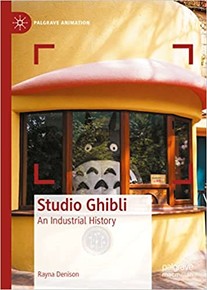 |
||
This book isn't a chronological story of Ghibli. Nor does it, for the most part, discuss Ghibli's films' aesthetics, themes or characters. Rather it considers Ghibli as a workplace, and as a company in the business of “manufacturing fantasy.” |
|||
| Review: | |||
It has been a decade since Studio Ghibli last released a hit film, Hayao Miyazaki's The Wind Rises in 2013. Since then, anime films by other creators have challenged Ghibli's box-office predominance, from One Piece Film Red to Makoto Shinkai's Suzume. Despite this, Ghibli remains the best-known anime studio in Japan and worldwide. Even if Miyazaki's film, How Do You Live?, is a bomb at the box-office this summer, the studio's reputation will still be upheld by spinoffs such as the award-winning My Neighbor Totoro stage play, which will return to London this November, the Spirited Away play being screened in American cinemas, and the Ghibli Museum and theme park attracting crowds in Japan. A new book, Studio Ghibli: An Industrial History by the British academic Rayna Denison, offers several alternative perspectives on the studio. They're bolstered by Denison's research – she quotes numerous Japanese-only sources. Like many academic books, it has a high price tag, so most readers will prefer to order it from a library. The book assumes you're familiar with the many English-language books and films about Ghibli already, such as Miyazaki's essay collections Starting Point and Turning Point, Steve Alpert's memoir Sharing a House with the Never-Ending Man, and documentaries such as The Kingdom of Dreams and Madness and 10 Years With Hayao Miyazaki. One oft-overlooked book is Toshio Suzuki's slim but valuable memoir, Mixing Work With Pleasure, translated in 2018. Denison says early on that she's concerned about the "mythologization" growing up around Ghibli and its best-known artist, Hayao Miyazaki. Each chapter of her book looks at a different aspect of Ghibli, starting with the accounts of its origins and moving on to working conditions at the studio and its treatment of women (its real women employees, not Ghibli's fantasy heroines). Later chapters reveal how Ghibli has approached CGI, how it promotes itself through exhibitions, museums, and the Ghibli Park, how its famous films are supported by commercials and other lesser-known works, and how it has handled its notorious problem of finding new directors. The chapter on Ghibli's origins is an excellent example of Denison's alternative perspectives. We are used to thinking of Ghibli as being formed to showcase the work of Miyazaki and Isao Takahata. However, Denison points out that one could equally see Ghibli's founding as a bid by its parent company, Tokuma Shoten, to create an anime franchise. This follows not only Miyazaki's pre-Ghibli Nausicaä of the Valley of Wind but also Yoshikazu Yasuhiko's Arion, the Gundam artist's take on a Greek myth. Both films were produced by Tokuma in the run-up to Ghibli's founding. Although Denison doesn't mention it, it's worth noting that Arion has a Joe Hisaishi score, and the hero's ally Seneca is voiced by Mayumi Tanaka, who voiced Pazu in Ghibli's Castle in the Sky around the same time. 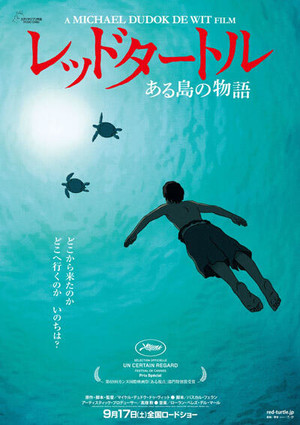 © 2016 Studio Ghibli - Wild Bunch - Why Not Productions - Arte France Cinéma - CN4 Productions - Belvision - Nippon Television Network - Dentsu - Hakuhodo DYMP - Walt Disney Japan - Mitsubishi - Toho A more esoteric quasi-Ghibli title is Hideaki Anno's live-action film Shiki-Jitsu (Ritual Day) in 2000, which was produced by Ghibli's subsidiary Studio Kajino. This feels like a real-world coda to Neon Genesis Evangelion, in which real director Shunji Iwai (The Case of Hana & Alice) plays a burned-out fictional director who's a transparent stand-in for Anno (or Shinji?). He goes to Anno's hometown of Ube and encounters a troubled girl who might be a version of Asuka. Incidentally, the girl is played by Ayako Fujitani, who wrote the book on which the film is based and is Steven Segal's daughter. Even leaving such obscure crossovers aside, Ghibli has a blurry identity for a company that's made a tiny amount of animation compared with many anime studios. Many people just think of Ghibli as the Miyazaki studio, though a faction of critics and fans insist that Miyazaki is only Ghibli's second best director after Takahata. Ghibli's popular image has been fixed by films like My Neighbor Totoro and Spirited Away, not by Takahata's visually diverse classics such as Grave of the Fireflies or The Tale of the Princess Kaguya. Denison doesn't weigh up those two masters herself. Instead, she draws attention to Ghibli's works by other hands, including Yoshiyuki Momose, Osamu Tanabe, and Takeshi Inamura, who all created commercials at Ghibli as well as contributing to the studio's features. Momose oversaw animated music videos for the electronic group Capsule, made at Studio Kajino, called Portable Kuukou and Space Station No. 9. He later moved to Studio Ponoc to create and direct the “Life Ain't Going to Lose” segment of Modest Heroes, about an egg-allergic boy. Denison points up that Ghibli's producer and sometime President Toshio Suzuki has made brutal comments about what working at Ghibli can be like, even for an artist as great as Yoshifumi Kondō – Suzuki claimed that Kondo was abused and traumatized by Takahata when he worked for him. (The Ghibli commentator Alex Dudok de Wit has said that Suzuki “kind of retracted” his comments about Takahata later on.) 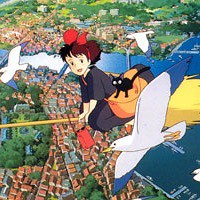 © 1989 Eiko Kadono • Nibariki • Tokuma Shoten As Denison notes, this comment could be taken to imply “staff working towards a single authorial creator's 'vision.'” This idea is often assumed in mainstream writing about animated films, although sakuga fandom works hard to challenge it. Denison herself quotes another Ghibli legend, the art director and background artist Kazuo Oga, saying that he rejected Miyazaki's advice to draw things over and over. “I'm someone who doesn't want to draw too much,” Oga laughed, saying that instead he just draws as precisely as he can. 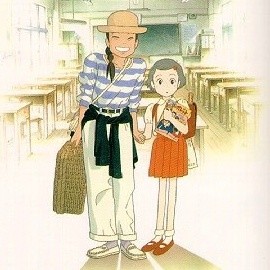 ©1991 岡本 螢・刀根夕子・Studio Ghibli・NHK Or at least that's an obvious conclusion that we outside Ghibli are led to, or guided to. Denison emphasizes that most of the quotes that she cites are taken from the studio's own publicity and art books. That's not to suggest they're false, but they're framed by marketing agendas. For example, Only Yesterday was publicized as a film especially “aligned” with the experiences of modern working women, such as Futaki. The experience of work is one of the strongest running themes in Ghibli's films. It's represented in everything from Only Yesterday's safflower-picking and the home-building in Grave of the Fireflies – one of that film's few joyous sequences – through to the witch's energetic entrepreneurship in Kiki's Delivery Service, set against Ursula's happy life alone as a painter in the woods. In light of Futaki's earlier comment about working on Kiki, there's an irony in Ursula's line in that film about learning to draw your own pictures, not imitating someone else's. 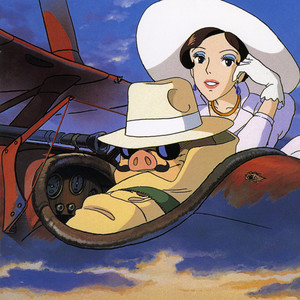 ©2023 Nibariki/TNNG Similarly, a production report on Totoro described the producer Eiko Tanaka as shouldering burdens and being “a triple threat warrior: vigorous, cheerful and beautiful.” Denison notes, “Tanaka's production work is masculinized (she is a warrior who shoulders burdens) but simultaneously she is sexualized (beautiful) and made to perform her production role in a service industry mode (cheerfully)”. She's both elevated yet framed in “reductive, almost anti-feminist ways.” Tanaka would go on to co-found STUDIO4°C, over which she's presided for nearly forty years. Porco Rosso promoted itself as a film where many of the most significant roles were taken by women. But Denison finds alternative perspectives here too. You could see the film's production credits as a feminist statement, but you could also see them as a publicity stunt to tie in with the film's self-marketing. Moreover, as Miyazaki himself noted, the “main” Ghibli staff at the time were all employed on Only Yesterday. Most glaringly, Porco Rosso's writer-director was still a man, as is the case in all Ghibli's output. In Denison's research, she never found a Ghibli female director “for feature films, short films, music videos, or even advertisements.” That puts Ghibli well behind not just Kyoto Animation or Science SARU but also Disney Animation, Pixar, and DreamWorks Animation which are frequently framed as being less progressive than the home of San, Kiki, and Chihiro. Denison's chapter on Ghibli's CG and effects animation complicates the myths about Ghibli as a handcrafted studio, resisting the onslaught of digital technology. These myths are encapsulated in the much-memed video clip of Miyazaki ranting about A.I. zombies being “an insult to life itself.” Miyazaki was never as much of an animation purist as that clip suggests. Even the proto-Ghibli Nausicaä was pushing “against the possibilities of the cel animation mode of production." In the film, the giant Ohmu insects were celluloid cut-outs on sliding mechanisms, as much stop-motion puppets as drawings. Reportedly, Miyazaki himself asked for a worm-covered monster (tatiragami) to be made in CG for Princess Mononoke. Meanwhile, Isao Takahata was striving to use CG to erase the differences between backgrounds and foregrounds in his new film. Ironically, he wanted to build on the craft of the great Canadian animator Frédéric Back (The Man Who Planted Trees), who had never needed CG. The result was My Neighbors the Yamadas, one of the most laborious Ghibli films to make and one of the least commercially successful. 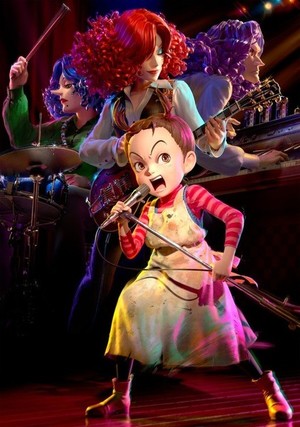 © 2020 NHK, NEP, Studio Ghibli Today, Ghibli appears to be dying, at least as a maker of animation that can blow new breezes through the industry, as the studio's myth-making puts it. But it's also quite possible that Ghibli could go out with a bang, producing a last blockbuster in Miyazaki's much-anticipated film How Do You Live?, which will be released in Japan this July. Chalk it up as one more paradox from Japan's most paradoxical studio. |
|
The views and opinions expressed in this article are solely those of the author(s) and do not necessarily represent the views of Anime News Network, its employees, owners, or sponsors.
|
| Grade: | |||
Overall : B+
+ Full of thought-provoking alternative perspectives on Ghibli, as well as much new information in English. |
|||
|
discuss this in the forum (1 post) |
this article has been modified since it was originally posted; see change history |
|||